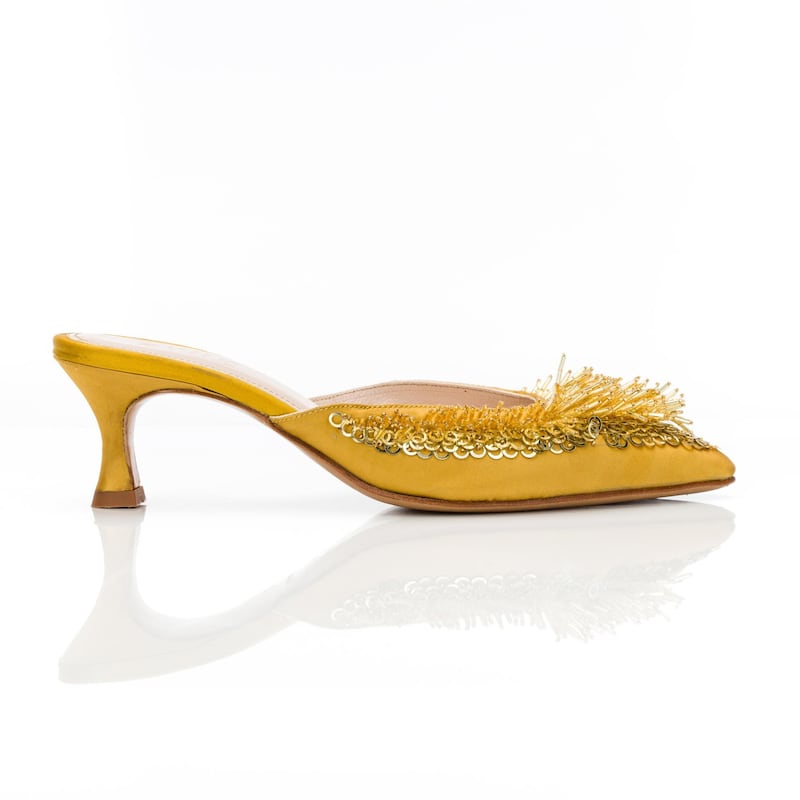There aren't many women who launch a fashion brand and then give birth to twins 10 days later. Or who spend the first six months of the launch of their start-up trying to convince male artisans in their homeland of the credibility of their plans to create an international shoe brand.
Four women on three continents share not only their Arabic heritage, but a robust determination to stamp their mark on the fashion world. Much is known about Beirut’s famous couturiers but, so far, flying under the international fashion radar are a group of entrepreneurial ladies with some pretty innovative ideas about what we should be wearing on our feet.

Andrea Wazen is the most established of the group. She returned to Beirut, from London, in 2013 to launch her eponymous footwear brand, with a desire to fly the flag for Lebanese-designed and produced shoes.
“It seemed a big opportunity because we have a lot of very good footwear manufacturers, which is not common in the Arab world. But they weren’t getting the exposure they deserved because there were no actual shoe designers based here,” Wazen explains over the phone from her Beirut studio. “It’s my way of giving something back to my community.”
Also part of this niche group of footwear designers is the Moroccan duo Zineb Britel and Laura Pujol, of Zyne. They are giving the traditional babouche a glamorous makeover but, along the way, encountering cultural issues as female entrepreneurs. Over in London, Jennifer Chamandi left the world of finance and started a family and a luxury shoe brand at the same time. Both these businesses were founded three years ago, but their experiences are very different.
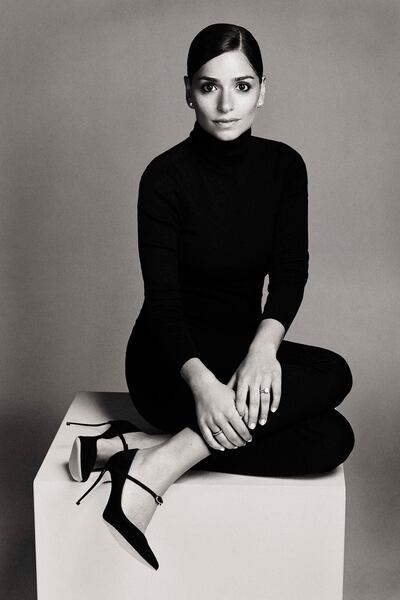
Chamandi left Beirut at 18 to study economics in London at her parents’ behest, before going into banking, trading in equity derivatives. It was brainy stuff, but deep down, she fostered a childhood dream to create shoes. She had always been at the top of her class at school, but was caught between her love of maths and her love of art – as a child, she studied art at the weekends and drew shoes endlessly. “It was never going to be clothes or bags; shoes are so complex because of their geometry,” she tells me as we sit in her pink suede Mayfair showroom. “I cherished my banking years, but I had this passion and wanted to know if I could do it.”
She studied drawing at Central Saint Martins on the weekends, while she was working, and then did an intense six-week summer school course on shoe design at Cordwainers. She had an idea that has since become her signature, but the best manufacturer that she could find in Italy didn’t speak any English. So she learnt Italian, just so that they could communicate.
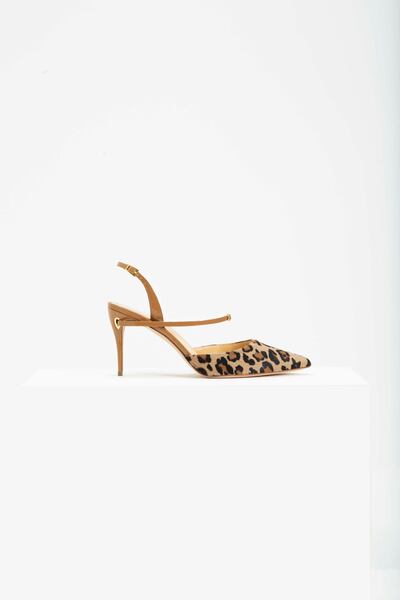
Her idea was an ultra-feminine pointed-toe pump with an "eye of the needle" hole in the heel, through which a strap is threaded. It is as distinctive as Christian Louboutin's red soles and the innovative construction has now been patented. It appears on every design, from pumps, slingbacks and low heels to ankle and thigh-high boots.
Her first shoes hit Browns a few days before Chamandi gave birth to twin girls – her husband Roberto Boghossian of the renowned luxury jewellery business supporting her every step of the way. "Us women are hardwired to multi-task, but that exclusivity with Browns gave me time to settle into motherhood."
The next big red-letter day was her launch in Harrods, the day before the twins were christened. This autumn she is taking on the US market with Bergdorf Goodman and Neiman Marcus, and she is already stocked at Level Shoes at The Dubai Mall.
Her chic designs have a fan club that includes Queen Rania of Jordan: “She’s worn three pairs in the past month, which is incredible,” Chamandi reveals. Another great ambassador for her designs is Amal Clooney: “Women who wear my shoes seem to be women with a mission,” Chamandi concludes.
It’s great for publicity. Zyne also hit the news when a couple of pairs of its beautifully handcrafted mules caught the eye of the Duchess of Sussex during her royal tour of Morocco with her husband, Prince Harry. They are probably being worn right now around Frogmore Cottage, their royal residence.
This sort of endorsement can be a powerful marketing tool, which Wazen discovered when the lime green thigh-high boots that she designed in collaboration with her friend Nicolas Jebran for Jennifer Lopez's current It's My Party world tour went viral on social media. She also benefits from support from her sister, Dubai resident and influencer Karen Wazen.
"I know how much exposure and traffic I get from her wearing my shoes," she says, "and we have to accept [that] the digital world has become a very important part of the fashion industry."
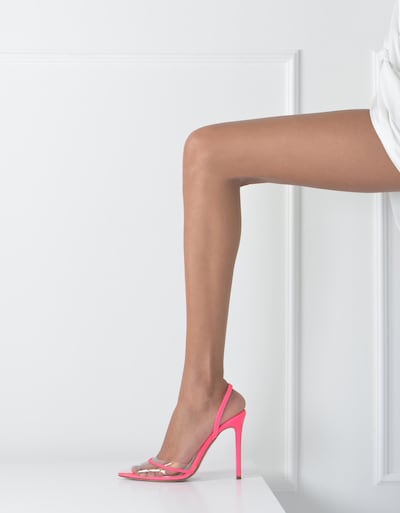
The Lebanese shoe designer has worked with countless singers and performers in the Middle East, "but it's not the same exposure as working with J-Lo," she admits. That was a step up. Eighty per cent of her sales are in the Middle East, but business in London and the US is growing, especially now that Hollywood actresses are looking for something different for their red carpet appearances. "I believe now is the time for Middle Eastern designers to prove themselves, as they're gaining the exposure they want and have lacked for so long. They put so much soul into their work," she says.
One designer who has been instrumental in raising the region's global profile is Elie Saab, who Wazen interned with before going to study fashion at Istituto Marangoni in Paris and then shoe design at Central Saint Martins in London. During her internship, she spent a lot of time drawing shoes: "I assumed all fashion designers know how to design shoes, so [I] was just sketching out ideas, but everyone there was going 'wow!' and that's how I realised it was my strong point," she reveals.
After learning about wholesaling and marketing while working for Louboutin and then Rupert Sanderson, she felt the urge to return to Beirut and follow her own dream to be a designer. Taking all that she had learnt from working with international buyers, she found manufacturers in the city to produce her designs.
"Beirut is a very big part of what the brand is, and I feel very proud of that because the results demonstrate the love and attention that goes into these handmade shoes," says Wazen. "It's amazing that given the political and financial instability, we still manage to produce very good products." Mesh and PVC slingbacks, platforms and a classic pump with stitching called Accent are her bestsellers.
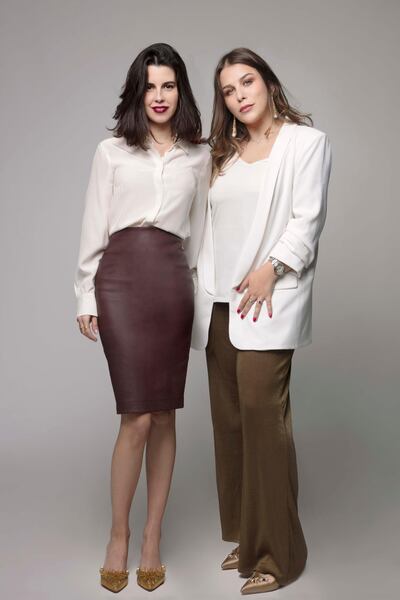
The road to success has been toughest for Zyne's Britel and Pujol, who were recently awarded funds and mentoring from the Fashion Trust Arabia. One of the first perks of the award was a pop-up at Diane Von Furstenberg's New York flagship with other winners, to meet press and buyers. "It is helping with our strategy for the future," says Pujol over the phone from their base in Casablanca.
The pair are long-time friends. Pujol graduated in advertising and luxury marketing in Paris; Britel studied fashion in Paris and shoe design in London, and worked at Christian Dior and Sonia Rykiel before discovering her true passion for shoes. She had the idea to develop the national shoe of her native Morocco, the babouche, into a fashion item, and simultaneously develop a social project.
"Our biggest challenge was finding the people with the right skills and being accepted by the artisans," says Pujol. "The majority of those making footwear are men, so we had to overcome their perceptions of a female's role in society; nevertheless we were determined this would be a 100 per cent made in Morocco product."
It was also making the artisans understand that these weren’t babouches for the souk but, instead, high-quality sandals – in silks, velvet, raffia and brocades, some with heels – to be made for the overseas market, to a deadline. Educating them became part of Zyne’s process.
“It was about sharing the story: showing them the store on 5th Avenue or Net-a-Porter that will sell the shoes to women who don’t know anything about Moroccan embroidery. So the artisans understood they would be shining a light on Morocco,” says Britel. “I need them to be aware, to be motivated.”
All the embroidery, beading and weaving is performed by women, men make the shoes and quality control is overseen by Britel and Pujol. Zyne started with a team of five and now has 50. Their focus is on empowering these women: one of their suppliers is a lady who learnt to weave raffia from her father and now runs a business employing 38 people. "It gives these women confidence, creative responsibilities and a place in society," explains Britel. In the process, Zyne is preserving the country's heritage by encouraging more women to learn traditional embroidery, but also bringing a modern touch and, hopefully, greater longevity to the babouche.
